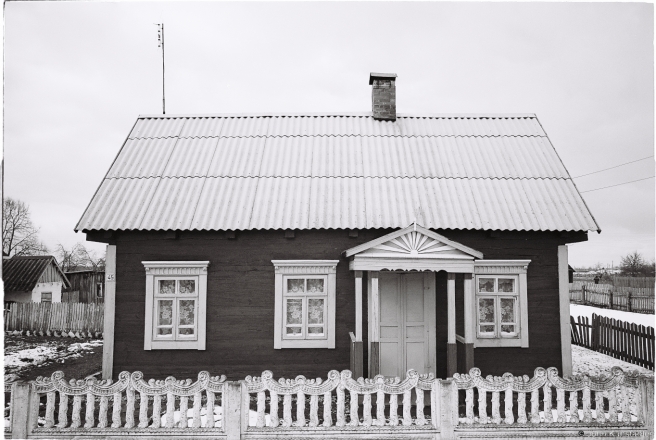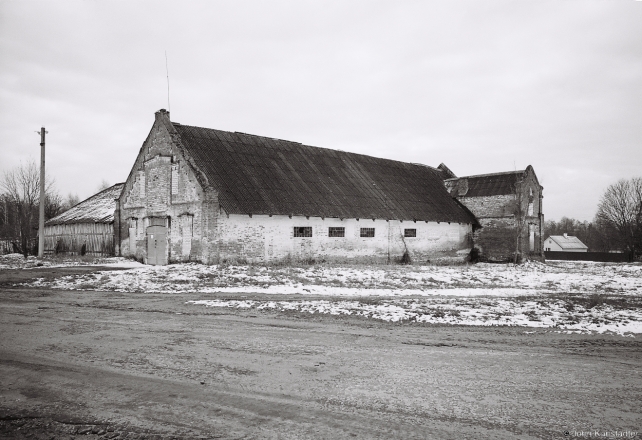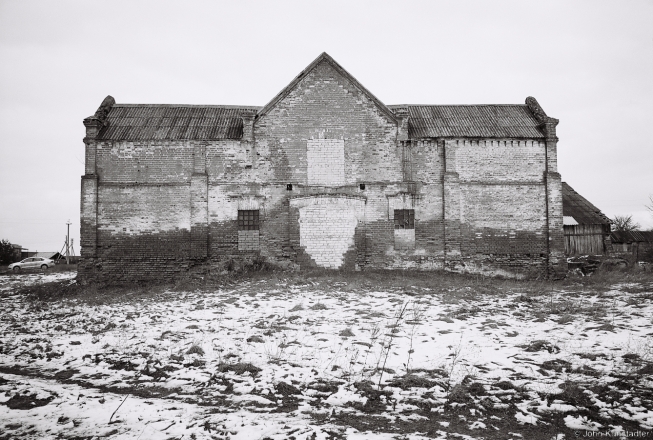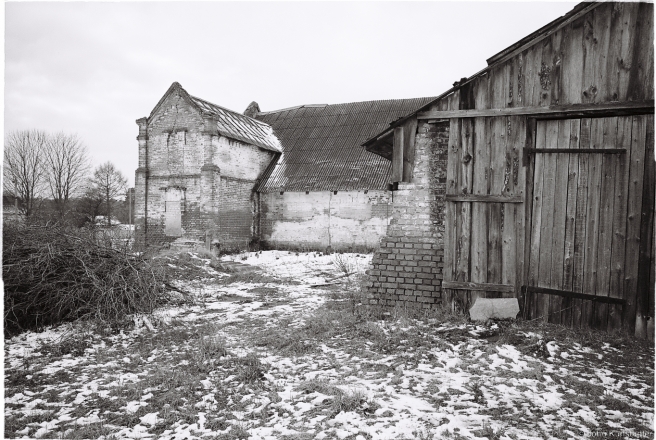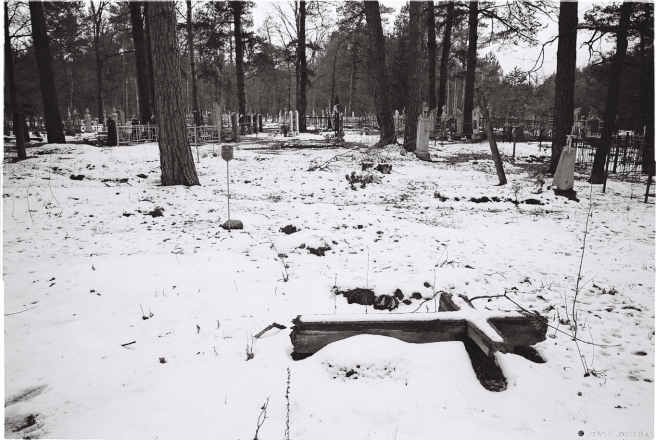Photographic expedition to Hantsavichy (Khatsinavichy) and Pinsk (Dabraslauka, Lyshcha, Zapol’lje, Pinsk, Pinkavichy, Kupjatsichy, Haradzishcha, Vylazy, Parakhonsk, Soshna, Kamjen’, Pahost-Zaharodski) Districts with Anton Astapovich, Chairman of the Belarusian Association for the Preservation of Cultural and Historical Monuments (БДТАПГК).
Part VII/VIII: Soshna.
Фотаэкспедыцыя з Антонам Астаповічам, старшыням Беларускага дабраахвотнага таварыства аховы помнікаў гісторыі й культуры (БДТАПГК) па Ганцавіцкім (Хацінавічы) і Пінскім (Дабраслаўка, Лышча, Запольле, Пінск, Пінкавічы, Купяцічы, Гарадзішча, Вылазы, Парахонск, Сошна, Камень, Пагост-Загародскі) раёнах.
Частка VII/VIII: Сошна.
Two symbols on the porch pediment: sun and arrow. Both symbols have pre-Christian roots, but have long been assimilated into the general traditions of Belarus’ still-strongly Christian heritage. The arrow is an example of the early 20th-century evolution of the traditionally two-headed marker (vil’chyk — вільчык) placed on a gable or pediment at the apex of the two slopes.
Сонца й страла (вільчык) — два дахрысьціянскія сімвалы, якія ўжо даўно сталі не’адемнай часткай агульнай спадчыны хрысьціянскай Беларусі. Страла — прыклад эвалюцыі на пачатку 20-га ст. вільчыку, спрадвечнага ўпрыгожаньня, які традыцыйна быў парным.
Mid- to late-19th-century stables. Locals told us these stables had been part of a local estate, whose owner, a patron of the Benedictine monastery in Haradzishcha (see photos of the day for April 25, 2016), let the Benedictines use them.
Мураваныя сядзібныя стайні з другогай паловы 19-га ст. Мясцовыя краязнаўцы нам сказалі, што ўладальнік сядзібы, апякун бэнэдыктынскага кляштара ў Гарадзішчы (гл. фотаздымкі дня 25 красавіка 2016 г.), дазваляў бэнэдыктынцам выкарыстоўваць стайні.
World War I soldiers’ graves. The unmarked mounds are most likely common graves of soldiers of the Russian Imperial Army. In contrast the Germans took great care to lay out separate cemeteries and to inter their dead soldiers’ bodies in individual graves with carefully-made tombstones.
Могілкі (брацкія могілкі) з Першай сусьветнай вайны, верагодна салдатаў расейскай імперскай арміі, бо немцы пахавалі сваіх у асабістых, дагледжаных магілах з асабістымі надмагільнымі пліткамі.
